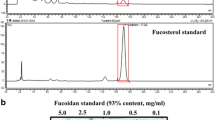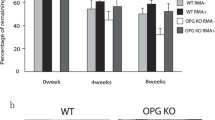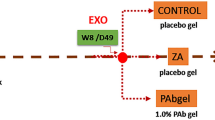Abstract
Objective
The aim of this work was to evaluate the anti-inflammatory and antiresorptive effects of Calendula officinalis (CLO) on alveolar bone loss (ABL) in rats.
Material and methods
Male Wistar rats were subjected to ABL by ligature with nylon thread around the second upper left molar. The contralateral hemimaxillae were used as control. Rats received saline solution (SAL) or CLO (10, 30, or 90 mg/kg) 30 min before ligature and daily until the 11th day. The maxillae were removed and prepared for macroscopic, radiographic, micro-tomographic, histopathologic, histometric analysis, and immunohistochemical localization of receptor activator of nuclear factor kappa-B ligand (RANKL) and osteoprotegerin (OPG). The gingival tissues were used to quantify the myeloperoxidase (MPO) activity, tumor necrosis factor-alpha (TNF-α), and interleukin-1β (IL-1β) concentrations by ELISA. Blood samples were collected for leukogram and to evaluate the bone-specific alkaline phosphatase (BALP) activity and serum levels of aspartate and alanine transaminases (AST/ALT).
Results
The bone loss induced by 11 days of ligature induced bone loss, reduced levels of BALP, leukocyte infiltration, increased MPO activity, gingival concentrations of TNF-α and IL-1β, and RANKL while reduced OPG immunoexpressions in the periodontal tissue and leukocytosis. Of the CLO, 90 mg/kg reduced bone loss, neutrophilia, the levels of pro-inflammatory mediators, and RANKL expression, while it increased OPG immunopositive cells and BALP serum levels, when compared to SAL. CLO did not affect either kidney or liver function, indicated by serum AST/ALT levels.
Conclusion
The present data suggests that CLO reduced inflammatory bone resorption in experimental periodontitis, which may be mediated by its anti-inflammatory properties and its effects on bone metabolism.
Clinical relevance
CLO can be a potential therapeutical adjuvant in the treatment of periodontitis.





Similar content being viewed by others
References
Pihlstrom BL, Michalowicz BS, Johnson NW (2005) Periodontal disease. Lancet 366:1809–1820
Giannobile WV (2008) Host-response therapeutics for periodontal diseases. J Periodontol 79(8 Suppl):1592–1600
Silva N, Abusleme L, Bravo D et al (2015) Host response mechanisms in periodontal diseases. J Appl Oral Sci 23:329–255
Kayal RA (2013) The role of osteoimmunology in periodontal disease. Biomed Res Int 2013:1–12
Souza PP, Lerner UH The role of cytokines in inflammatory bone loss. Immunol Investig 42:555–622
Norlindh T (1946) Studies in the Calenduleae II. Phytogeography and interrelation. Botaniska Notiser 4:471–506
Ukiya M, Akihisa T, Yasukawa K, Tokuda H, Suzuki T, Kimura Y (2006) Anti-inflammatory, anti-tumorpromoting, and cytotoxic activities of constituents of marigold (Calendula officinalis) flowers. J Nat Prod 69:1692–1696
Saini P, Al-Shibani N, Sun J et al (2012) Effects of Calendula officinalis on human gingival fibroblasts. Homeopathy 101:92–98
Khairnar MS, Pawar B, Marawar PP, Mani A (2013) Evaluation of Calendula officinalis as an anti-plaque and anti-gingivitis agent. J Indian Soc Periodontol 17:741–747
Bezerra MM, de Lima V, Alencar VB et al (2000) Selective cyclooxygenase-2 inhibition prevents alveolar bone loss in experimental periodontitis in rats. J Periodontol 71:1009–1014
Preethi KC, Kuttan R (2009) Wound healing activity of flower extract of Calendula officinalis. J Basic Clin Physiol Pharmacol 20:73–79a
Goes P, Lima AP, Melo IM, Rêgo RO, Lima V (2010) Effect of Atorvastatin in radiographic density on alveolar bone loss in wistar rats. Braz Dent J 21:193–198
Lisboa MR, Gondim DV, Ervolino E et al (2015) Effects of electroacupuncture on experimental periodontitis in rats. J Periodontol 86:801–811
Leitão RF, Ribeiro RA, Chaves HV, Rocha FA, Lima V, Brito GA (2005) Nitric oxide synthase inhibition prevents alveolar bone resorption in experimental periodontitis in rats. J Periodontol 76:956–963
Goes P, Melo IM, Silva LM et al (2014) Low-dose combination of alendronate and atorvastatin reduces ligature-induced alveolar bone loss in rats. J Periodontal Res 49:45–54
Moss DW, Whitby LG (1975) A simplified heat-inactivation method for investigating alkaline phosphatase isoenzymes in serum. Clin Chim Acta 61:63–71
Goes P, Melo IM, Dutra CS, Lima AP, Lima V (2012) Effect of alendronate on bone-specific alkaline phosphatase on periodontal bone loss in rats. Arch Oral Biol 57:1537–1544
Sousa LH, Linhares EV, Alexandre JT et al (2016) Effects of atorvastatin on periodontitis of rats subjected to glucocorticoid-induced osteoporosis. J Periodontol 87:1206–1216
Dalcico R, de Menezes AM, Deocleciano OB et al (2013) Protective mechanisms of simvastatin in experimental periodontal disease. J Periodontol 84:1145–1157
de Barros Silva PG, de Oliveira CC, Brizeno L et al (2016) Immune cellular profile of bisphosphonaterelated osteonecrosis of the jaw. Oral Dis 22:649–657
Arora D, Rani A, Sharma A (2013) A review on phytochemistry and ethnopharmacological aspects of genus Calendula. Pharmacogn Rev 7:179–187
Tanideh N, Tavakoli P, Saghiri MA et al (2013) Healing acceleration in hamsters of oral mucositis induced by 5-fluorouracil with topical Calendula officinalis. Oral Surg Oral Med Oral Pathol Oral Radiol 115:332–338
Garnero P (2008) Biomarkers for osteoporosis management: utility in diagnosis, fracture risk prediction and therapy monitoring. Mol Diagn Ther 12:157–170
Forte L, Torricelli P, Boanini E et al (2016) Antioxidant and bone repair properties of quercetinfunctionalized hydroxyapatite: an in vitro osteoblast-osteoclast-endothelial cell co-culture study. Acta Biomater 32:298–308
Zhou Y, Wu Y, Jiang X et al (2016) The effect of quercetin on the osteogenesic differentiation and angiogenic factor expression of bone marrow-derived mesenchymal stem cells. PLoS One 10:e0129605
Srivastava S, Bankar R, Roy P (2013) Assessment of the role of flavonoids for inducing osteoblast differentiation in isolated mouse bone marrow derived mesenchymal stem cells. Phytomedicine 20:683–690
Wang XC, Zhao NJ, Guo C, Chen JT, Song JL, Gao L (2014) Quercetin reversed lipopolysaccharide-induced inhibition of osteoblast differentiation through the mitogen-activated protein kinase pathway in MC3T3-E1 cells. Mol Med Rep 10:3320–3326
Araújo AA, Souza TO, Moura LM et al (2013) Effect of telmisartan on levels of IL-1, TNF-α, downregulated COX-2, MMP-2, MMP-9 and RANKL/RANK in an experimental periodontitis model. J Clin Periodontol 40:1104–1111
Araújo AA, Varela H, Brito GA et al (2014) Azilsartan increases levels of IL-10, down-regulates MMP-2, MMP-9, RANKL/RANK, Cathepsin K and up-regulates OPG in an experimental periodontitis model. PloS One 9:e96750
Gonçalves DC, Evangelista RC, da Silva RR et al (2014) Infliximab attenuates inflammatory osteolysis in a model of periodontitis in Wistar rats. Exp Biol Med 239:442–453
Preethi KC, Kuttan G, Kuttan R (2009) Anti-inflammatory activity of flower extract of Calendula officinalis Linn. and its possible mechanism of action. Indian J Exp Biol 47:113–120b
Schwingel TE, Klein CP, Nicoletti NF et al (2014) Effects of the compounds resveratrol, rutin, quercetin, and quercetin nanoemulsion on oxaliplatin-induced hepatotoxicity and neurotoxicity in mice. Naunyn Schmiedebergs Arch Pharmacol 387:837–848
Napimoga MH, Clemente-Napimoga JT, Macedo CG et al (2013) Quercetin inhibits inflammatory bone resorption in a mouse periodontitis model. J Nat Prod 76:2316–2321
Hajishengallis G, Chavakis T, Hajishengallis E, Lambris JD (2015) Neutrophil homeostasis and inflammation: novel paradigms from studying periodontitis. J Leukoc Biol 98:539–548
Hienz SA, Paliwal S, Ivanovski S (2015) Mechanisms of bone resorption in periodontitis. J Immunol Res 2015:615486
Walsh MC, Choi Y (2014) Biology of the RANKL-RANK-OPG system in immunity, bone, and beyond. Front Immunol 5:511
de Araújo RF Jr, Reinaldo MP, Brito GA (2014) Olmesartan decreased levels of IL-1β and TNF-α, downregulated MMP-2, MMP-9, COX-2, RANK/RANKL and up-regulated SOCs-1 in an intestinal mucositis model. PLoS One 9:e114923
U.S Food and Drug Administration. Generally Recognized as Safe (GRAS) Available at: http://www.fda.gov/food/ingredientspackaginglabeling/gras/default.htm
Funding
This work was supported by CNPq (grant # 480481/2013-0) and FUNCAP (grant # PJP-0072-00092.01.00/12), Brazilian agencies.
Author information
Authors and Affiliations
Corresponding author
Ethics declarations
Conflict of interest
The authors declare that they have no conflicts of interest.
Ethical approval
The protocol was approved by the Committee on the Ethics of Animal Experiments of the Federal University of Ceará (Permit Number: 49/2012).
Informed consent
For this type of study, formal consent is not required.
Rights and permissions
About this article
Cite this article
Alexandre, J.T.M., Sousa, L.H.T., Lisboa, M.R.P. et al. Anti-inflammatory and antiresorptive effects of Calendula officinalis on inflammatory bone loss in rats. Clin Oral Invest 22, 2175–2185 (2018). https://doi.org/10.1007/s00784-017-2308-7
Received:
Accepted:
Published:
Issue Date:
DOI: https://doi.org/10.1007/s00784-017-2308-7




